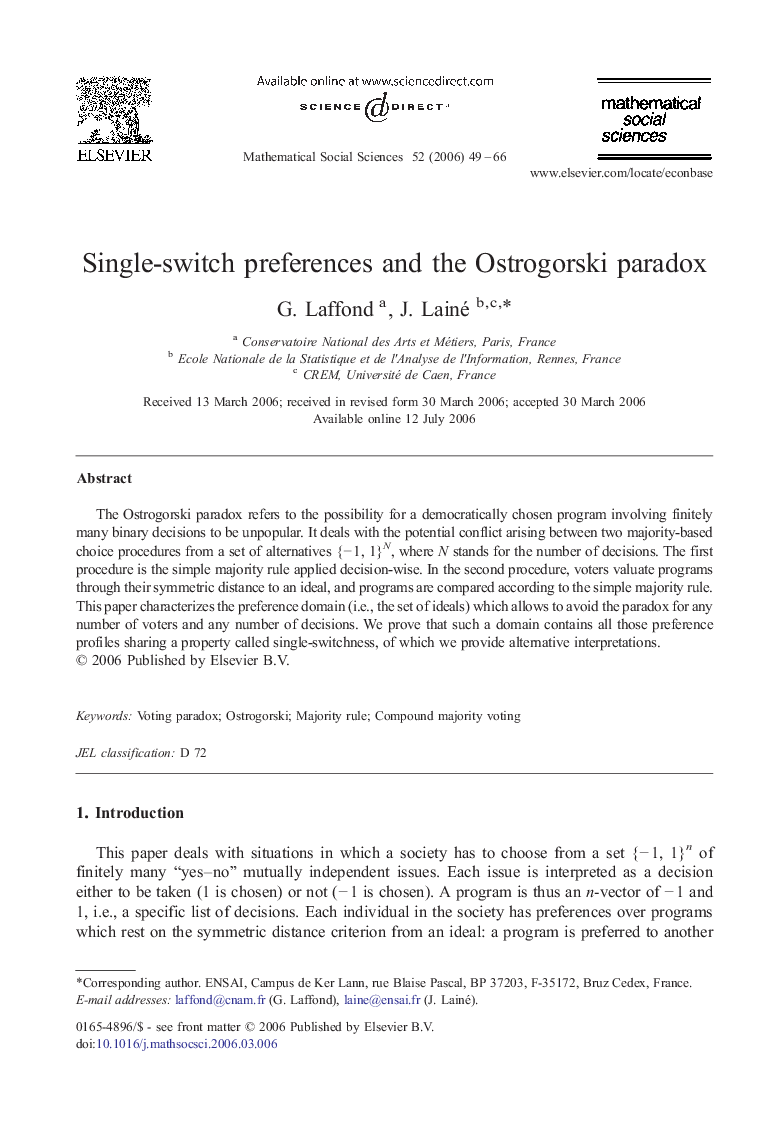| Article ID | Journal | Published Year | Pages | File Type |
|---|---|---|---|---|
| 973411 | Mathematical Social Sciences | 2006 | 18 Pages |
The Ostrogorski paradox refers to the possibility for a democratically chosen program involving finitely many binary decisions to be unpopular. It deals with the potential conflict arising between two majority-based choice procedures from a set of alternatives {− 1, 1}N, where N stands for the number of decisions. The first procedure is the simple majority rule applied decision-wise. In the second procedure, voters valuate programs through their symmetric distance to an ideal, and programs are compared according to the simple majority rule. This paper characterizes the preference domain (i.e., the set of ideals) which allows to avoid the paradox for any number of voters and any number of decisions. We prove that such a domain contains all those preference profiles sharing a property called single-switchness, of which we provide alternative interpretations.
